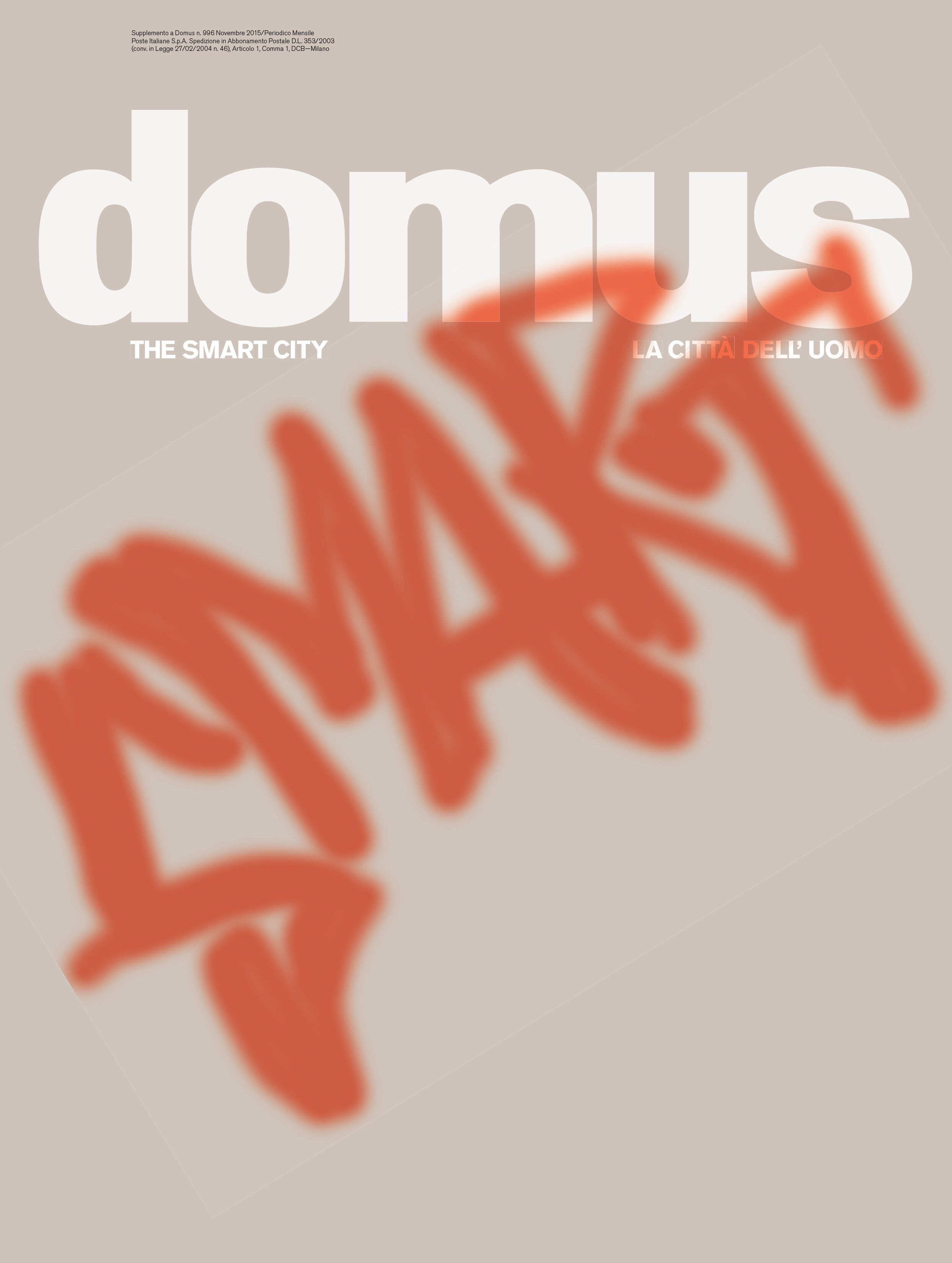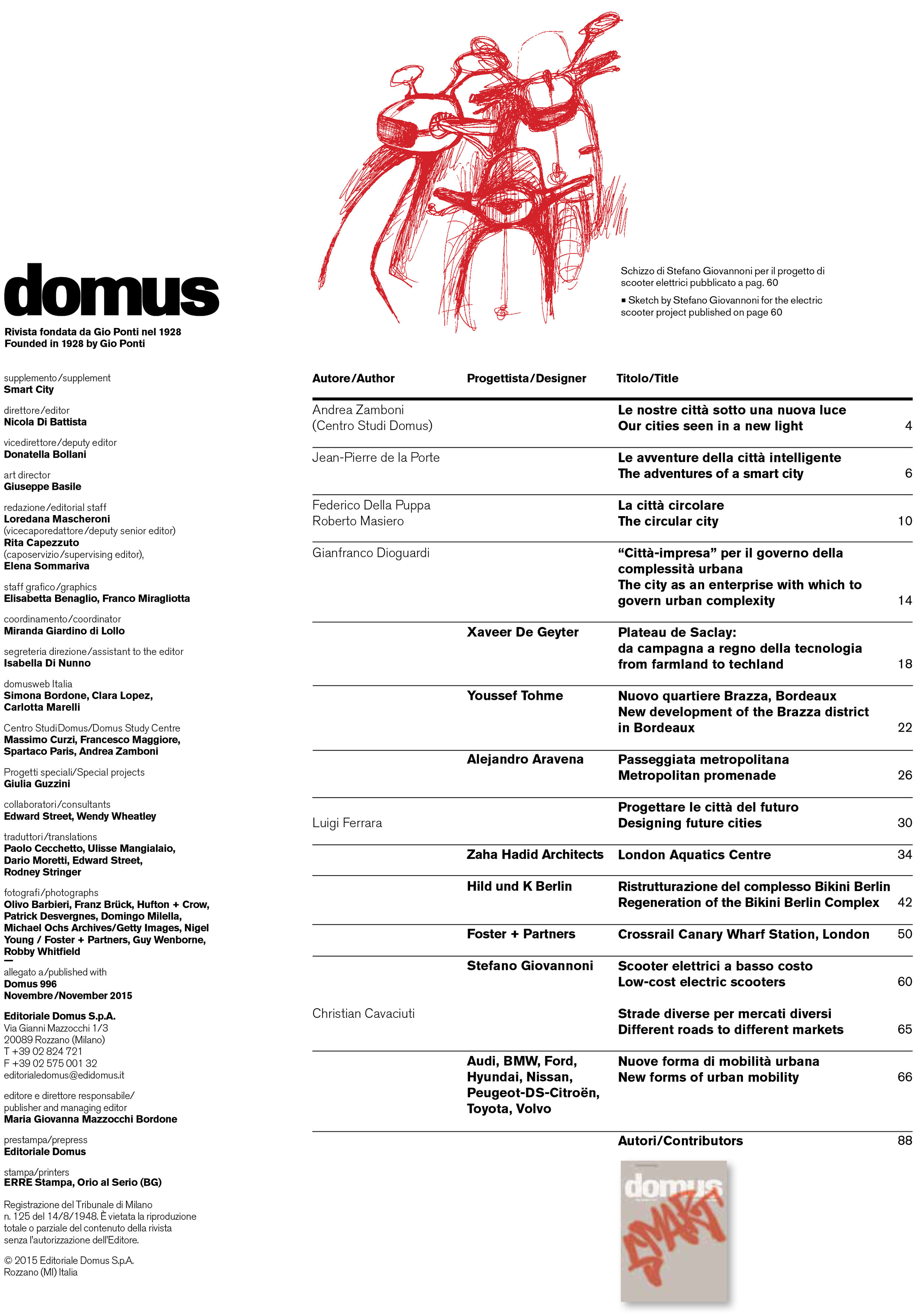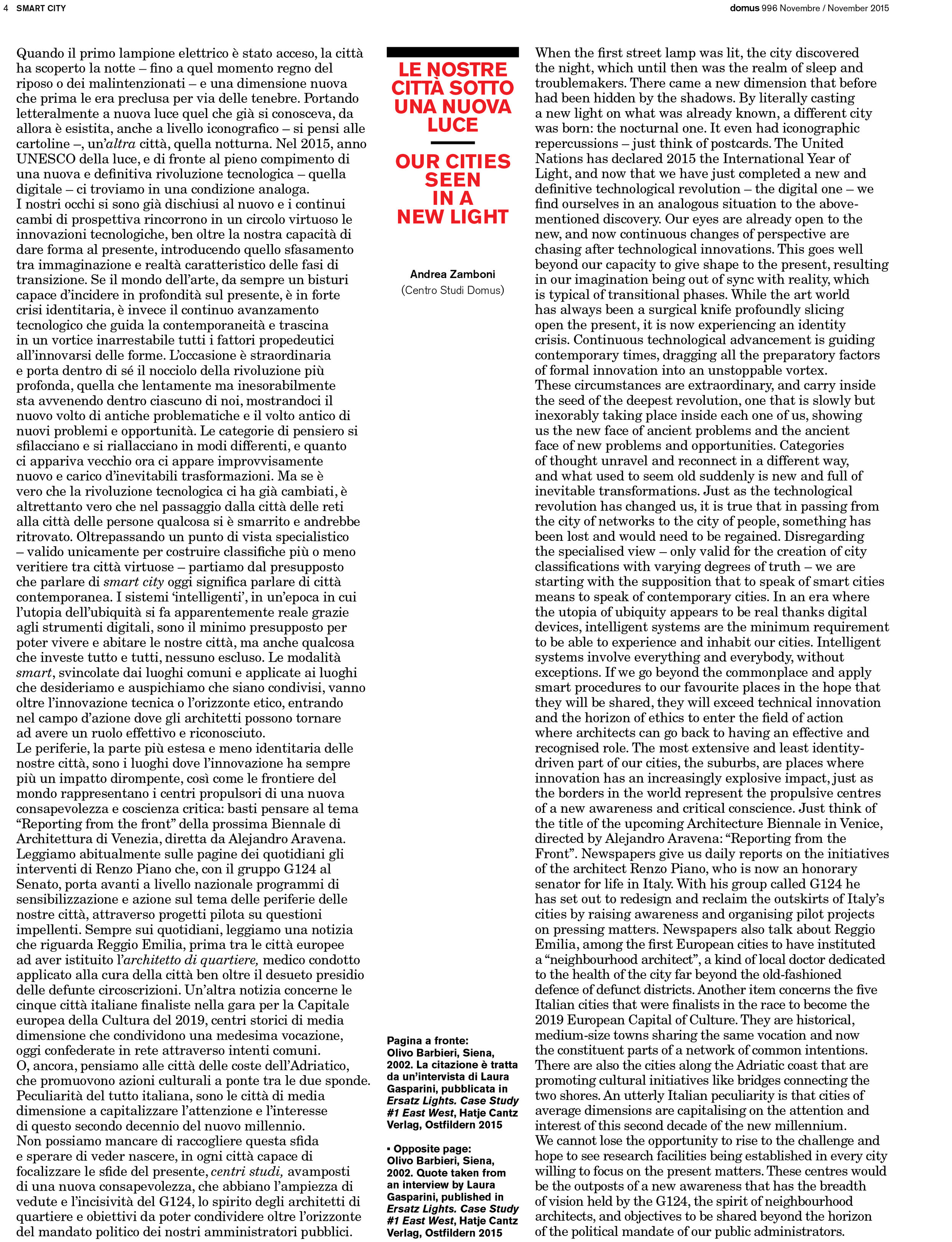Curated by Andrea Zamboni (Centro Studi Domus)
Editoriale Domus, 2015
With texts by: Andrea Zamboni (Centro Studi Domus), Jean-Pierre de la Porte, Federico Della Puppa, Roberto Masiero, Gianfranco Dioguardi, Luigi Ferrara
Projects by: Xaveer De Geyter, Youssef Tohme, Alejandro Aravena, Zaha Hadid Architects, Hild und K Berlin, Foster + Partners, Stefano Giovannoni
I BEGAN EXPLORING THE ‘POINT OF BEING’, TRYING TO IGNORE THE RIGID CATEGORIES OF PERSPECTIVE VIEWS BY USING OBSERVATIONPOINTS THAT FLUCTUATED. THESE RE-READ THE SHAPE OF THE CITY AS IF IT WERE A MODEL Olivo Barbieri
LE NOSTRE CITTÀ SOTTO UNA NUOVA LUCE
Andrea Zamboni (Centro Studi Domus)
When the first street lamp was lit, the city discovered the night, which until then was the realm of sleep and troublemakers. There came a new dimension that before had been hidden by the shadows. By literally casting a new light on what was already known, a different city was born: the nocturnal one. It even had iconographic repercussions – just think of postcards. The United Nations has declared 2015 the International Year of Light, and now that we have just completed a new and definitive technological revolution – the digital one – we find ourselves in an analogous situation to the abovementioned discovery. Our eyes are already open to the new, and now continuous changes of perspective are chasing after technological innovations. This goes well beyond our capacity to give shape to the present, resulting in our imagination being out of sync with reality, which is typical of transitional phases. While the art world has always been a surgical knife profoundly slicing open the present, it is now experiencing an identity crisis. Continuous technological advancement is guiding contemporary times, dragging all the preparatory factors of formal innovation into an unstoppable vortex. These circumstances are extraordinary, and carry inside the seed of the deepest revolution, one that is slowly but inexorably taking place inside each one of us, showing us the new face of ancient problems and the ancient face of new problems and opportunities. Categories of thought unravel and reconnect in a different way, and what used to seem old suddenly is new and full of inevitable transformations. Just as the technological revolution has changed us, it is true that in passing from the city of networks to the city of people, something has been lost and would need to be regained. Disregarding the specialised view – only valid for the creation of city classifications with varying degrees of truth – we are starting with the supposition that to speak of smart cities means to speak of contemporary cities. In an era where the utopia of ubiquity appears to be real thanks digital devices, intelligent systems are the minimum requirement to be able to experience and inhabit our cities. Intelligent systems involve everything and everybody, without exceptions. If we go beyond the commonplace and apply smart procedures to our favourite places in the hope that they will be shared, they will exceed technical innovation and the horizon of ethics to enter the field of action where architects can go back to having an effective and recognised role. The most extensive and least identitydriven part of our cities, the suburbs, are places where innovation has an increasingly explosive impact, just as the borders in the world represent the propulsive centres of a new awareness and critical conscience. Just think of the title of the upcoming Architecture Biennale in Venice, directed by Alejandro Aravena: “Reporting from the Front”. Newspapers give us daily reports on the initiatives of the architect Renzo Piano, who is now an honorary senator for life in Italy. With his group called G124 he has set out to redesign and reclaim the outskirts of Italy’s cities by raising awareness and organising pilot projects on pressing matters. Newspapers also talk about Reggio Emilia, among the first European cities to have instituted a “neighbourhood architect”, a kind of local doctor dedicated to the health of the city far beyond the old-fashioned defence of defunct districts. Another item concerns the five Italian cities that were finalists in the race to become the 2019 European Capital of Culture. They are historical, medium-size towns sharing the same vocation and now the constituent parts of a network of common intentions. There are also the cities along the Adriatic coast that are promoting cultural initiatives like bridges connecting the two shores. An utterly Italian peculiarity is that cities of average dimensions are capitalising on the attention and interest of this second decade of the new millennium. We cannot lose the opportunity to rise to the challenge and hope to see research facilities being established in every city willing to focus on the present matters. These centres would be the outposts of a new awareness that has the breadth of vision held by the G124, the spirit of neighbourhood architects, and objectives to be shared beyond the horizon of the political mandate of our public administrators.



